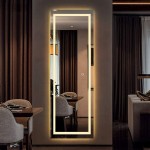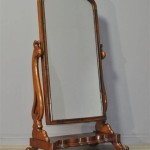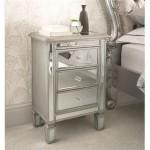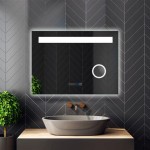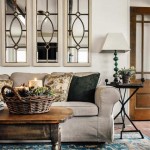Bathroom Mirror Trim Kits: An Aesthetic and Practical Upgrade
Bathroom mirror trim kits offer a straightforward and cost-effective way to enhance the appearance of a plain or builder-grade bathroom mirror. These kits typically consist of pre-cut or customizable trim pieces that adhere to the mirror's surface, instantly providing a more finished and polished look. Beyond aesthetics, trim kits can also offer practical benefits, such as concealing imperfections along the mirror's edges and providing a protective barrier against moisture.
The market offers a diverse array of bathroom mirror trim kits, catering to various design preferences and budgetary constraints. Options range from simple, minimalist designs to more elaborate and ornate styles. Materials commonly used include wood, PVC, metal, and composite materials, each offering distinct advantages in terms of durability, moisture resistance, and ease of installation.
Key Benefits of Using Bathroom Mirror Trim Kits
Several compelling reasons exist for considering a bathroom mirror trim kit. These benefits extend beyond simple aesthetics and contribute to the overall functionality and longevity of the mirror.
Enhanced Aesthetics: Perhaps the most obvious benefit is the significant improvement in the mirror's aesthetic appeal. A trim kit transforms a plain, frameless mirror into a focal point, adding character and visual interest to the bathroom. The trim can be chosen to complement existing bathroom fixtures, cabinetry, and décor, creating a cohesive and stylish look. The added frame helps to define the mirror and make it appear more substantial, especially in larger bathrooms.
Concealment of Imperfections: Over time, the edges of a frameless mirror can become chipped, scratched, or discolored due to moisture exposure and general wear and tear. A trim kit effectively conceals these imperfections, restoring the mirror's pristine appearance without the need for a complete replacement. This is a particularly appealing option for older mirrors that may be difficult or costly to replace.
Protection Against Moisture Damage: Bathrooms are inherently humid environments, and excessive moisture can seep behind frameless mirrors, leading to corrosion and delamination of the reflective surface. A well-installed trim kit, particularly one made from moisture-resistant materials like PVC or composite, acts as a barrier, preventing moisture from reaching the mirror's edges and prolonging its lifespan. This is especially important in bathrooms with poor ventilation.
Cost-Effectiveness: Compared to purchasing a brand-new framed mirror, a trim kit offers a significantly more affordable solution for upgrading the bathroom's aesthetics. The cost of a trim kit is typically a fraction of the price of a new mirror, making it an attractive option for homeowners on a budget. Furthermore, the ease of installation often eliminates the need for professional assistance, further reducing costs.
Types of Bathroom Mirror Trim Kits
The variety of bathroom mirror trim kits available ensures a suitable option for virtually any bathroom style and design preference. Understanding the different types of kits and their characteristics is crucial for making an informed decision.
Pre-Cut Kits: These kits are designed for specific mirror sizes and shapes, offering the simplest and most straightforward installation. The trim pieces are pre-cut to the exact dimensions required, eliminating the need for measuring and cutting. Pre-cut kits are ideal for standard-sized rectangular or square mirrors. However, their limited adaptability makes them unsuitable for irregularly shaped mirrors or custom sizes.
Cut-to-Size Kits: These kits provide more flexibility, allowing for customization to fit virtually any mirror size and shape. The trim pieces are supplied in longer lengths, and the user must measure and cut them to the desired dimensions using a saw or miter box. Cut-to-size kits are a good option for non-standard mirrors or when a custom fit is desired. They require more skill and precision during installation but offer greater versatility.
Peel-and-Stick Kits: These kits feature an adhesive backing, simplifying the installation process. The trim pieces are simply peeled and stuck onto the mirror surface. Peel-and-stick kits are a quick and easy option for DIY enthusiasts. However, the quality of the adhesive is crucial. A weak adhesive may result in the trim pieces detaching over time, especially in humid environments. Proper surface preparation is essential for ensuring a strong and lasting bond.
Clip-On Kits: These kits utilize small clips or brackets to attach the trim to the mirror. This method eliminates the need for adhesive, making it a more reversible and less permanent option. Clip-on kits are particularly useful for rental properties or situations where the trim may need to be removed or replaced in the future. The installation process is slightly more involved than peel-and-stick kits, but the reversibility offers a significant advantage.
Materials Used in Bathroom Mirror Trim Kits
The choice of material significantly impacts the trim kit's durability, appearance, and suitability for the bathroom environment. Different materials offer varying levels of moisture resistance, ease of maintenance, and aesthetic appeal.
Wood: Wood trim kits offer a classic and elegant look, adding warmth and character to the bathroom. However, wood is susceptible to moisture damage and may warp, rot, or mildew in humid environments. Wood trim kits typically require sealing or painting to protect them from moisture exposure. Hardwoods like oak or maple are more durable and moisture-resistant than softwoods like pine.
PVC (Polyvinyl Chloride): PVC trim kits are a popular choice due to their excellent moisture resistance and affordability. PVC is a synthetic material that is impervious to water, making it ideal for bathroom applications. PVC trim kits are also lightweight and easy to install. They are available in a variety of colors and finishes, including wood-grain options. However, PVC may not offer the same level of aesthetic appeal as natural wood.
Metal: Metal trim kits provide a sleek and contemporary look, adding a touch of sophistication to the bathroom. Metals like aluminum and stainless steel are durable and corrosion-resistant, making them suitable for humid environments. Metal trim kits are available in a variety of finishes, such as brushed nickel, chrome, and oil-rubbed bronze. However, metal can be more expensive than other materials.
Composite Materials: Composite trim kits are made from a combination of wood fibers and polymers, offering a balance of durability, moisture resistance, and aesthetic appeal. Composite materials are less susceptible to warping and rot than natural wood and are available in a variety of colors and finishes. They are also relatively easy to install and maintain. Composite trim kits are a good option for those seeking the look of wood with improved performance.
Installation Considerations
Proper installation is crucial for ensuring the trim kit's longevity and aesthetic appeal. While many trim kits are designed for DIY installation, careful planning and execution are essential.
Surface Preparation: Before installing any trim kit, the mirror surface must be clean, dry, and free of dust, grease, and other contaminants. Use a glass cleaner or mild detergent to thoroughly clean the mirror. For peel-and-stick kits, consider using a degreasing agent to ensure a strong adhesive bond. Allow the mirror to dry completely before proceeding with the installation.
Accurate Measurements: Precise measurements are essential, especially for cut-to-size kits. Use a measuring tape and a straight edge to accurately determine the required dimensions of the trim pieces. Double-check your measurements before cutting the trim. It is always better to err on the side of caution and cut the trim slightly longer than necessary, as it can always be trimmed down further.
Proper Cutting Techniques: When cutting trim pieces, use a saw or miter box to ensure clean, straight cuts. For wood trim, use a fine-tooth saw to prevent splintering. For PVC trim, use a utility knife or PVC cutter. Wear safety glasses to protect your eyes from debris. If using a power saw, follow all safety precautions outlined in the manufacturer's instructions.
Adhesive Application: When using peel-and-stick kits, carefully align the trim pieces before pressing them firmly onto the mirror surface. Use a roller or squeegee to ensure even pressure and eliminate any air bubbles. For kits that require separate adhesive, apply the adhesive evenly to the back of the trim pieces, following the manufacturer's instructions. Use painter's tape to hold the trim pieces in place while the adhesive dries.
Sealing and Finishing: For wood trim kits, consider sealing or painting the trim to protect it from moisture exposure. Use a sealant or paint that is specifically designed for use in bathrooms. Apply multiple coats for added protection. For metal trim kits, consider applying a clear coat to prevent tarnishing. Clean the trim regularly to maintain its appearance.

Driftwood Mirror Frames Custom Wood Framed Mirrors Mirrormate

Mirredge 60 In X 1 5 Cherry Walnut Contemporary Framing Installation Kit 54111 The Home Depot

Unique Or Large Bathroom Mirrors Mirrorchic

Diy Bathroom Mirror Frame With Molding The Happier Homemaker

Diy Mirror Frames Custom Framed Mirrors Frame My

How It Works Frames For Mirror Frame Kit Mirrormate

Avery Black Mirror Frame Kit Self Adhesive My

How To Frame Out That Builder Basic Bathroom Mirror For 20 Or Less

How To Frame A Mirror

Mirror Frames For Mirrors Mirrormate

